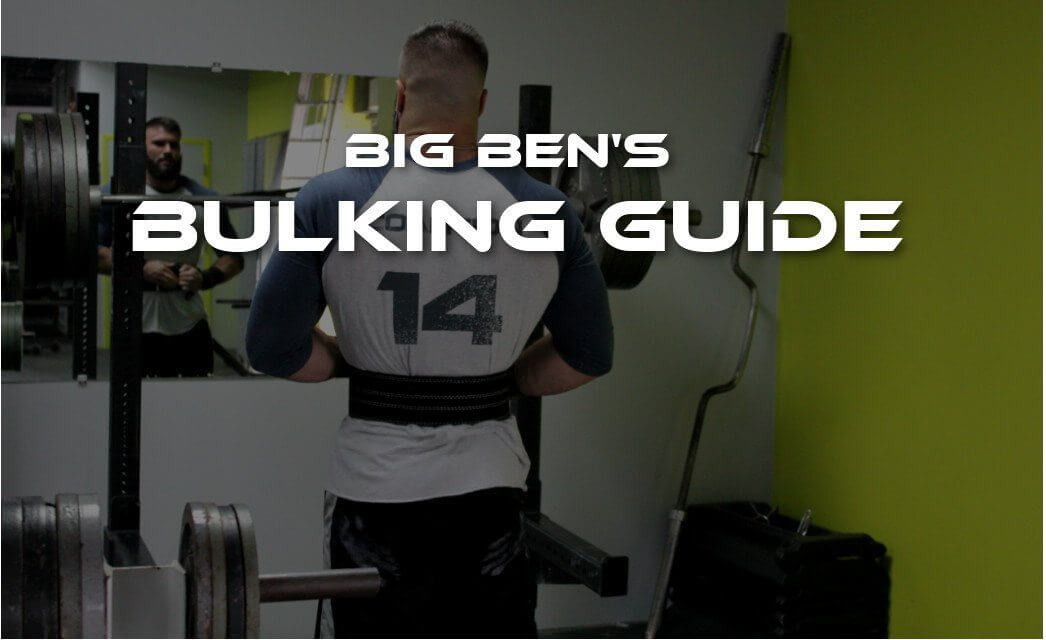
With October half way in the books, the best time of the year is right around the corner. Bulking season, a time of hopeful gains, but all too frequently expectations don’t align with reality. Some overeat, undereat, or rely too heavily on supplementation to do the work. Over my time here at the shop and the years I’ve spent cycling through leaning out and putting on mass, I’ve found some staples to putting on mass effectively.
First thing I do when I’m mapping out my bulking season is find out where my maintenance caloric intake stands. This is the amount of calories I can take in where I don’t lose or gain weight. This is very important because it gives you a solid place to start. If you don’t know what you’re putting into your body, it can be difficult to execute what you’re looking to do. A good app to use to track your caloric intake is MyFitnessPal. The numbers they give you aren’t worth following but the database they have is worth utilizing. Once your maintenance is established, it’s important to see how your body responds to a surplus of calories. Patience is key here, I start off with an increase of 200 calories a day the first week and see how my body takes it. Usually I’ll keep my protein intake the same throughout and increase my carbs to start. My fats will increase as well but at a slower rate. After that I play it by feel and the scale. The scale isn’t an end all be all but it does play a part in what you’re trying to do. By the end of my bulk, I’ll end up anywhere from 1,000 to 1,500 calories above maintenance. For example, my current bulk has me at 5k calories a day with a macro breakdown of 294 grams of protein, 125 grams of fat, and 675 grams of carbs. Everyone responds differently to food and your metabolism will crank differently than mine. It’s important to note that with the tremendous amount of carbs I’m consuming, most of them are being utilized around my workout. Here at the shop we suggest 25% of your carbs coming preworkout, 10% intra, and another 25% post workout. That’s 60% of your daily carbohydrates coming around training time. Carb timing can affect the amount of quality of muscle that you put on so be conscious of when you eat certain high carbohydrate meals. Eventually all good things do come to an end, it’s important to gauge when that end is. You will put on some fat when you’re bulking, it’s almost inevitable, but when you get to the point where you’re putting on mostly fat, it’s time to hang it up. This is when we find our maintenance again and hang out there until the next go around or we decide to ride a caloric deficit into beach season.
A question I receive a lot is “What should I eat?”. To some it seems silly, just eat more right? Though it may seem simple, it’s not as black and white as it looks. We spoke a decent amount about maintenance already but we didn’t really get into what those calories should be comprised of. As we look at the wide range of body compositions, from 6% bodyfat all the way to a mean bulk, the flexibility in your calories changes. Your maintenance should be around 90% “clean” food, as we bulk, that percentage changes. One of the most important parts of your bulk is making sure you have your foundation meals, your chicken and rice, eggs and spinach, and ground beef and yams so to speak. Once you’ve established your ground work, this is where you add in your pop tarts, pizza, ice cream, and Wendy’s. Bulking on clean eating can only get you so far. A total junk food bulk only ends in a sloppy mess. The perfect combination can get you where you want to go. This combination also sets you up for that summer cut. Once your bulk is over and you need to start working your way down, just slowly start cutting out the “fun” calories. Your foundation meals are already in place so leaning out shouldn’t be as tough to tackle. It’s all about setting yourself up for the next move.
Supplementation during your bulk will change but not drastically. When I’m in a huge caloric surplus my emphasis on BCAAs changes and my gears shift towards using carbs during my workout instead. We spoke about majority of the carbs coming around your workout, this is when some quality performance carbs come into play. A couple of my favorite intra workouts are Super Carb from Nutra Bio and Raging Full from Project AD. Both products will help enhance recovery, endurance, and supply a mean pump. I don’t go a workout without using one or the other. My absolute favorite post workout carb is Karbolyn from EFX. With 50 grams of high quality carbs per scoop, Karbolyn is the perfect add on to my post workout shake. With the combination of both carb supplements I find my recovery is exceptional and the extra 300 calories only helps towards my daily caloric intake. My protein powder intake remains the same, I’m a sucker for any isolate really. Right now my go to is two scoops of Rule 1 mixed with some Karbolyn post workout (50 grams of protein, 50 grams of carbs, 400 calories). I’ll use this concoction in conjunction with food. Mass gainers are something that I’ve used before religiously and have had great success with, however, once my capacity for food intake changed so did my need for mass gainers. My favorite gainer hands down is Extreme Mass. I would use two scoops with a cup of oatmeal, 16oz of whole milk, and a tbsp of honey. Liquid calories can be your best friend, especially for our customers that have issues eating large amounts of food or work jobs that don’t allow for long breaks. I’m a big proponent of GDA’s as well, especially Matador from Project AD or Pump Dirt from Innova Pharm. GDA’s are going to help make sure those high carb meals are being utilized properly. I use a GDA every night pre and post workout. The last supplement category that may come into play, depending on the severity of my weight gain, are joint supports. I play this by feel as sometimes it can be a necessity. Usually I’ll run with a basic joint support like Nutra Bio’s Joint Support or Superior Cissus from Innova Pharm.
Last subject I’ll touch on is training. Being in a caloric surplus and in an optimal muscle building situation, I put a hyper focus on the compound movements. Barbell squats, bench presses, shoulder presses, and deadlifts take up most of my workouts during the week. My movement goals are percentage based week by week. I’ll add in three or four accessory movements and call it a day. I do cardio in the form of HIIT or recreational sports twice a week for cardiovascular health. The emphasis I put on the compound movements stems from wanting build thick dense muscle mass. The type of muscle that compound movements support is muscle that’s there to stay. You can always tell which guys hit those lifts and those who don’t, especially when cutting down. A lot of the programs I refer back to can be found on our app. I don’t use one particular program necessarily but find movements and percentages that inspire my current routine.
There’s more than one way to do things correctly, these are just some of the staples that I’ve found to work for me over the years. The “off season” is a time to grow and better your physique in the long run. Remember this lifestyle is a marathon, not a sprint.

